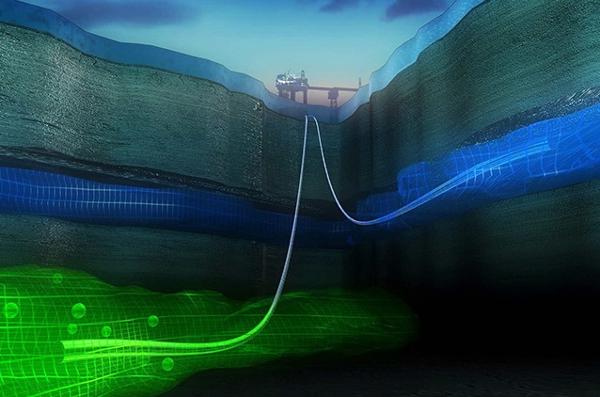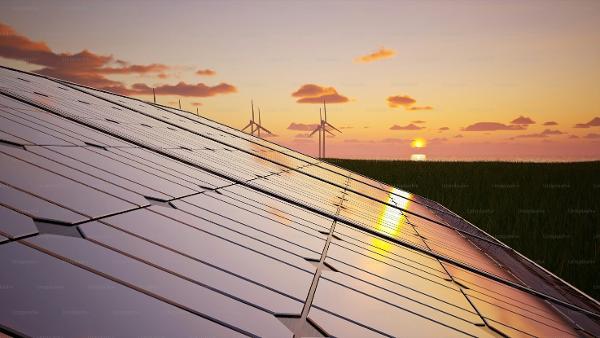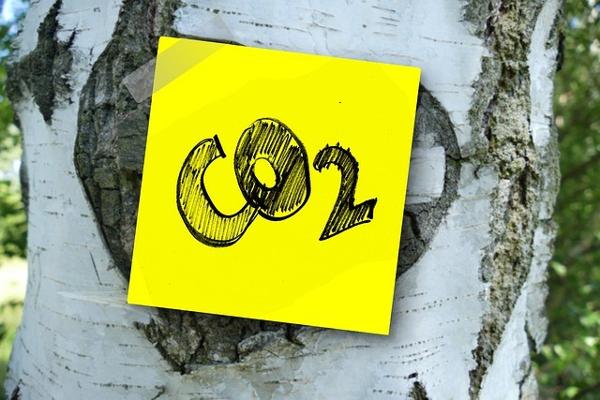Over the past decade, the Global CCS Institute has observed the group of climate change technologies known as carbon capture and storage (CCS) mature from a solution to power generation emissions to the enabler of new low emissions industries necessary to meet climate change targets. This is demonstrated by the latest international climate change models which require CCS deployment at an unprecedented scale over the coming 80 years. The reason is that CCS is: a proven emissions reduction solution and working today; capable to decarbonise major industrial emissions; and a key carbon dioxide removal technology to reach climate targets.
CCS contribution in IPCC (2018) climate targets.

Source: Global CCS Institute and IPCC, 2018.
CCS technologies are working today
Today, there are 23 large-scale CCS facilities in operation or under construction, capturing almost 40 million tonnes per annum (Mtpa) of CO2. A further 28 pilot and demonstration-scale facilities are in operation or under construction (Figure 2). Collectively, these capture more than 3 Mtpa of CO2. To date over 230 Mt of anthropogenic CO2 has been stored from CCS facilities worldwide.
CCS sites around the world
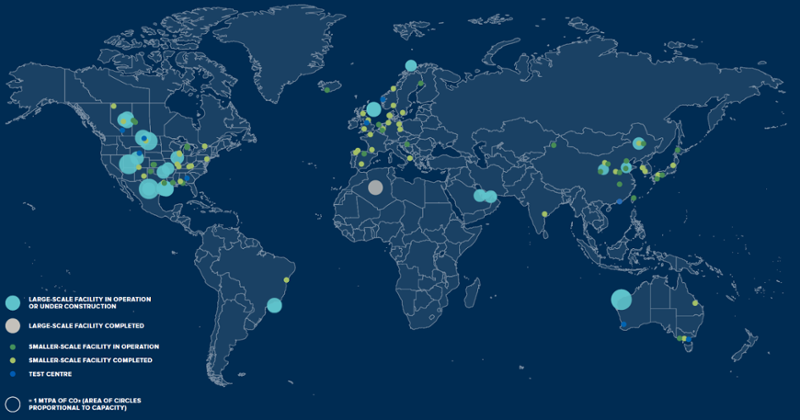
Source: Global CCS Institute, 2018.
Note: The size of the circles are proportional to the CO2 capture capacities of the large-scale facilities.
The history of CCS goes back more than 45 years. The first large-scale CCS facility was Val Verde at an oilfield in Texas in 1972 (see Figure 3). The driver for this deployment was enhanced oil recovery (EOR), where CO2 was injected into oil reserves to facilitate increased oil extraction; the CO2 ultimately being permanently stored in the pore space that previously held the oil. Historically, EOR has been the only commercial incentive for the deployment of CCS.
Increasingly CCS is being deployed as a dedicated emissions reduction technology. The first such large-scale facility was Sleipner in the North Sea, off Norway. Sleipner has been operating for over 20 years permanently storing over 18 Mt of CO2. This year, the world’s largest dedicated geological storage facility, the Gorgon CO2 Injection facility started operation. The operation is currently ramping up, but will eventually inject up to 4 Mtpa of CO2 around 2 km below the surface of a small island off Western Australia.
CCS has the distinct advantage of applying to a broad range of industrial sources of CO2 (Figure 3). For example, it is capturing and storing CO2 emissions at commercial scale from:
- Biofuel production, hydrogen production, fertiliser production, coal power generation, natural gas processing and petcoke gasification in the USA
- Hydrogen production and coal power generation in Canada
- Natural gas processing in Brazil, China, Europe and Australia
- Steel production and natural gas production in the Middle East
Commercial large-scale CCS facilities deployment history and industries
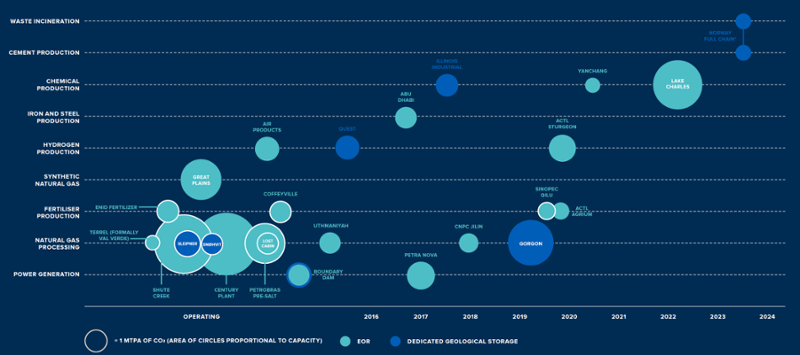
Source: Global CCS Institute, 2018.
CCS is critical to a low emission industry
CCS is recognised as one climate mitigation technology to enable the just-transition to a low emissions future. Today, the technology is the only currently available technology that can deliver deep emissions reduction in many industrial processes that are vital to the global economy, such as steel and cement.
In addition, many sectors produce a pure stream of CO2 inherent to their processing and manufacturing. Industries including chemical, oil and gas refining and processing, as well as fertiliser production can also implement CCS for deep emissions reduction. Today these sectors make up most currently operating large-scale facilities.
Finally, CCS is also a conduit to the zero-emission hydrogen future. Currently, the cheapest and most mature technology for hydrogen production, blue hydrogen (conversion of fossil fuel to hydrogen + CCS) can decarbonise the transport sector and domestic gas markets, amongst other sectors (see Figure 4).
Carbon dioxide removal will require negative emission technologies
Inevitably, due to the continued rise in fossil fuel consumption along with those sectors unable to decarbonise completely (e.g. agriculture), CO2 removal from the atmosphere through negative emission technologies will be increasingly deployed. According to the IPCC (2018), between 100 – 1000 GT of CO2 must be removed from the atmosphere by 2100. Under current climate models, bioenergy and CCS (BECCS) is the largest contributor to meeting this target. BECCS is a mature, low-cost technology available today. As Direct Air Capture with Storage (DACS) matures, it could also potentially be deployed at scale.
The Global Carbon Capture and Storage Institute (the Institute) is an international think tank, backed by governments, businesses and NGOs, whose mission is to accelerate the deployment of carbon capture and storage (CCS) within an energy transition that reduces emissions to net-zero by mid-century to prevent potentially dangerous climate change. The Institute is headquartered in Melbourne, Australia, with offices in Washington DC, London, Brussels, Beijing, Calgary, and Tokyo.

